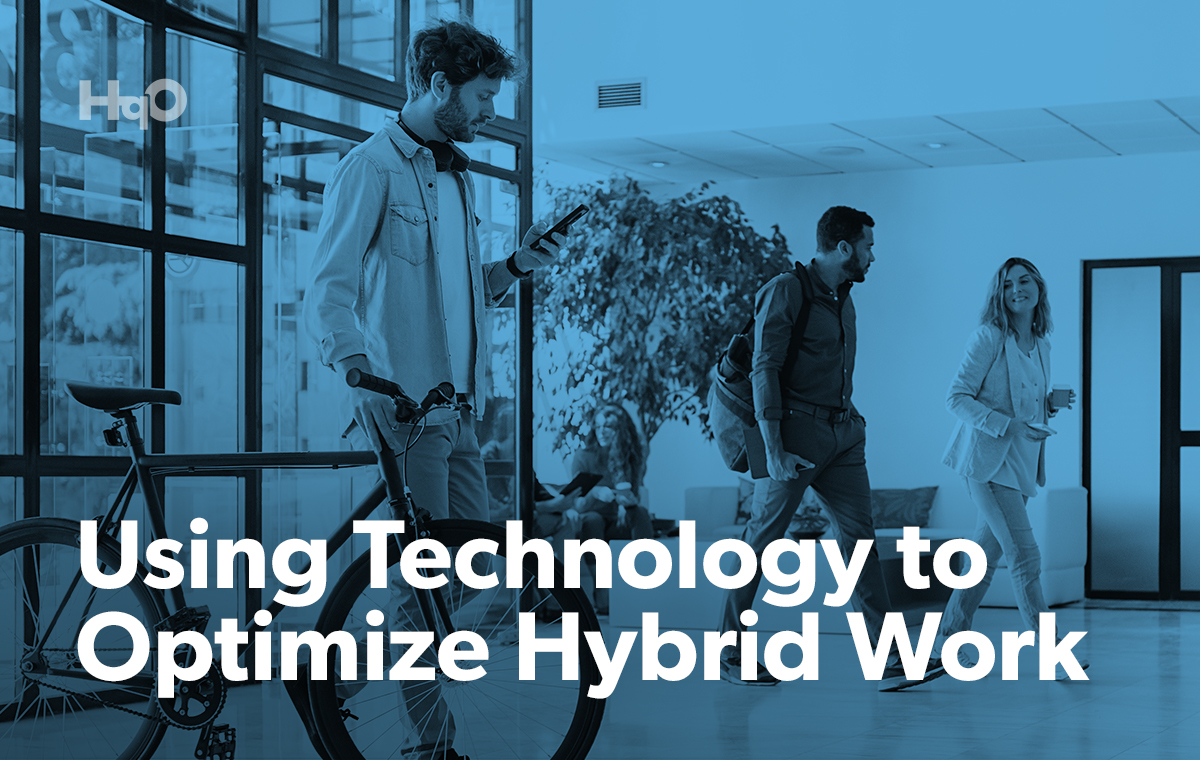The future of work has changed dramatically in the wake of the COVID-19 pandemic, with hybrid work becoming increasingly common across the corporate world. HqO’s State of Workplace Experience report shows, for example, that a large majority of employers and commercial real estate (CRE) companies expect that their employees and tenants will remain in a hybrid work modality for the foreseeable future. In fact, 88% of employees surveyed in the report say that they think hybrid work is equally important to other benefits such as healthcare and annual leave. These findings are supported by research from McKinsey, the Harvard Business Review, and Stanford’s Institute for Economic Policy Research, among others.
But hybrid work isn’t the only concern for employers: record-high inflation is also contributing to an uncertain economic environment, which has led many companies to cut back on costs. Even as the economy begins to cool off, however, the labor market remains white-hot; high salaries and labor shortages have both persisted throughout the current wave of economic uncertainty. In the event of a more serious economic downturn (which is a distinct possibility, according to the Federal Reserve) companies will want to do all they can to keep top talent. The so-called “Great Resignation” has combined with a volatile market environment to create a unique set of economic conditions.
In response to these shifting conditions, a greater number of companies are leveling-up their investments in workplace experience. These investments can help companies hang on to top talent during this turbulent period in the market, while also optimizing spend on workplace environments.
To better understand the benefits of investing in workplace experience, however, it’s important to first understand what “workplace experience” actually means. Follow along to learn more, and consider downloading our recent guide.
Defining Workplace Experience
So, what is workplace experience?
It’s a term that has become increasingly common, but it can take on many different meanings depending on the company. In order to understand the benefits of improving the workplace experience, it’s important to first have a clear understanding of both the term and its importance for employers.
Simply put, workplace experience consists of the experiences, people, and spaces that employees interact with in the workplace — from the physical office or remotely. These components can be fueled and amplified by technology, empowering people to do their best work regardless of location. Below are just a few examples of this dynamic.
Experiences:
- Building access control
- Menus and order ahead
- Room booking
- Parking & transit
People:
- Office socializing
- Vendor/services interactions
- Coworker interactions
- Workplace culture and climate
Spaces:
- In-office
- Work from home
- Office common areas
- Satellite offices
- Coworking spaces
- Office amenity spaces
Once a company connects employees to each other, their overall workplace culture, and the physical spaces and resources offered to them, they will be able to generate both short- and long-term success.
Investing in Workplace Experience with Technology
Employers value workplace experience because the quality of that experience directly affects the bottom line. Research shows, for example, that investments in workplace experience lead to increased employee productivity (a 29% increase in work quality, according to Gallup) and decreased levels of absenteeism, among other benefits.
And, when it comes to workplace experience technology, the financial benefits are overwhelmingly clear: companies like EY find that the implementation of workplace experience technology yields direct financial benefits for commercial real estate companies. This sentiment is also backed by HqO’s State of Workplace Experience in 2022 report, which finds that 72% of employers agree that workplace experience and engagement tools will be a critical element of successful offices in the future. In fact, that same report found that almost 75% of office landlords are already using a workplace experience app like HqO at their properties. These numbers show that — beyond simply investing in the workplace experience — employers and landlords are investing specifically in workplace experience technology.
But what is a workplace experience app? And what is workplace experience technology? As this kind of technology becomes more and more popular, these are important terms to know and understand.
Workplace Technology and its Benefits
Workplace experience technology is, simply put, software that employers use to improve the workplace experience.
In general, this technology is most useful when it’s implemented as a single mobile app for employees, which they can download directly to their smartphones. An effective workplace experience technology platform should also be backed by self-service and analytics capabilities. The HqO app, for example, provides an advanced analytics platform, while also offering a wide variety of functionalities including mobile access control (meaning that employees can gain access to secure areas using their smartphones), food ordering, enhanced in-office programming, and custom and open-ended feedback options.
Workplace experience technology like HqO’s enables employees to manage their workplace experience; think of it as a remote control for the workplace, similar to a TV remote control. The app can bring together the different capabilities that employees need all under a single pane of glass (i.e. all in a single, easy-to-use app).
Interested in learning more? Download HqO’s An Introduction to Workplace Experience guide now to understand how data from a workplace experience app can help you optimize your properties.



